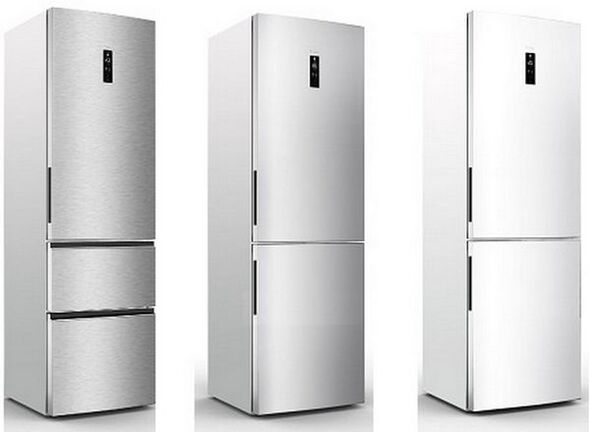A new generation of devices can help to significantly reduce electricity consumption in the home. Of course, it is unthinkable to immediately replace all existing devices with energy-saving ones, but the successive replacement of obsolete or obsolete devices can also help to improve the energy consumption parameters in the house.
Energy saving devices
Refrigerators

The first energy efficient devices we look at can save a lot of money by reducing energy consumption in the home. After all, these devices work day and night, so it is better to choose them carefully. These are refrigerators. The technological innovations of almost all manufacturers are inverter motors. They are very quiet and allow you to regulate the power consumption of the device in order to avoid consumption peaks. Thanks to a constant and even temperature, energy consumption could be optimized and the efficiency of refrigerators increased.
Several manufacturers have developed technology that allows you to better preserve food by distinguishing the ventilation in different compartments. The release of active oxygen in modern models prevents the formation of bacteria. The energy-saving refrigerators from the South Korean company, in turn, use insulation boards more efficiently. They are significantly thinner than the materials used just a few years ago. This means that modern refrigerators have become more energy efficient. More space for food, but less energy consumption for cooling. American researchers recently placed refrigerators at the top of the ranking for energy savings. These energy-saving devices consume as much as a 20W lamp. This result has been achieved thanks to effective insulation, gaskets, new variable speed compressors and, in turn, the shape and position of the evaporator and condenser.
The results of other studies done in the United States may convince even the most indecisive to change refrigerators. In 12 years after buying a new model, the cost of energy can be several hundred dollars compared to an old one. The most energy efficient models are those with a freezer on top of the refrigerator. At the same time, side-by-side refrigerators have the worst energy efficiency indicators.
Dishwashers
From a technological point of view, modern dishwashers not only use less energy, but also much less water, and adjustable baskets allow optimal loading. German manufacturers also use the properties of natural zeolite, a mineral that absorbs moisture when washing and releases it as steam when drying, making the last step of the wash cycle faster and more efficient.
Washing machines
Modern washing machines offer differentiated washing cycles in order to reduce water and detergent consumption. Extensive studies have shown that the cleaning process does not depend on the temperature of the water and the cleaning agent used, but is a consequence of the mechanical action of the drum. In this regard, new solutions have emerged, for example the washing machines developed by the company introduce air bubbles into the drum, which allow the detergent to penetrate the textiles better and also to wash well in cold water.
Induction cookers
Induction hobs are becoming increasingly popular, including among energy-saving household appliances. They cook food by creating an electromagnetic field that only heats the bottom of the cookware. This means there is no loss of energy. You save money when you consider that these devices are 95% efficient, while traditional gas stoves have leaks on the order of 30-60%.
vacuum cleaner
How do you convert watts into the useful work of a vacuum cleaner? Not much if the vacuum system is not efficient. The only thing you can tell from the wattage on the energy label is the energy consumption. But what if all this energy is used inefficiently? New energy-saving devices offer good guarantees. Vacuum cleaner models with cyclone technology have the advantage that they do not have a dust bag. The suction power remains unchanged, which benefits the energy efficiency of the device.
Energy efficiency label
After you have made sure that the appliances in your home can help save energy, all you have to do is choose the right model. There are many offers and it is not that easy to navigate. The first thing to look out for is the energy efficiency label, which gives a clear idea of the energy consumption.
The horizontal arrows at the top indicate the energy efficiency class, which can range from A +++ (best) to G (worst). The color of the arrows also shows the level of energy efficiency of the devices: from red for high energy consumption classes to dark green for the most energy-efficient devices. The arrows show the energy consumption in kWh per year based on laboratory tests, i. e. under optimal conditions. If you know the cost of electricity, you can easily work out the annual cost of electricity, which of course also depends on how the device is used.


























